Last Chance to Catch NYC's Holiday Notalgia Train
We met the voices of the NYC subway on our nostalgia ride this weekend!


Since its launch in 2009, Untapped Cities has focused on unearthing New York City’s most unique and surprising places, stories and events. In pursuit of this mission, we often spotlight our favorite hidden gems of the city — from secret bars to quirky neighborhood finds to now-abandoned buildings. Yet, even as New Yorkers with a penchant for the unknown, there’s still a lot left to discover about the dynamic, urban environment that surrounds us.
If you’ve ever wondered about how the subway lines got their colors or the evolution of neighborhood names, we invite you to peruse through our archives. For easy access, we’ve also rounded up a list of our favorite fun facts about New York City. Read on, urbanites:

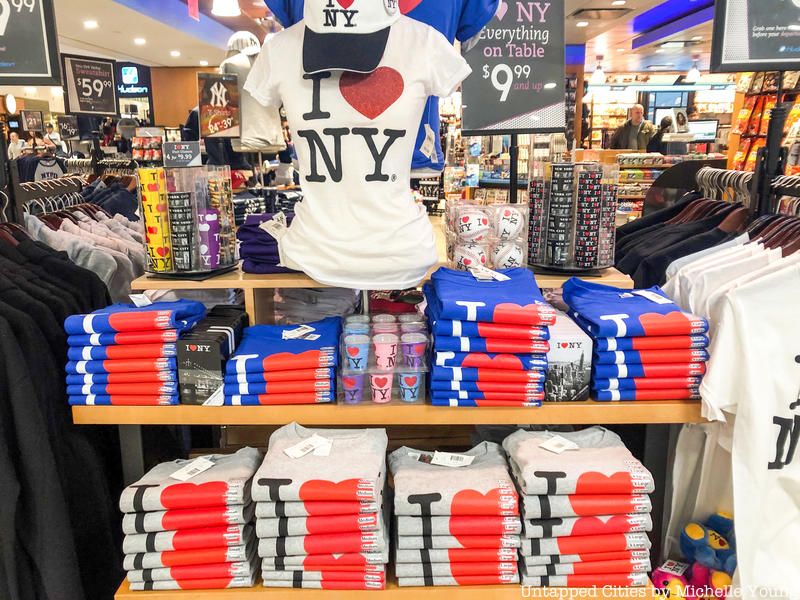
The history of the “I <3 NY” logo may surprise you—it was a quick attempt to help salvage New York City’s failing 1970s economy by saving its tourism industry.
The story starts during the 1970s, with New York City suffering from an economic crisis and many areas of the city hitting rock bottom. To worsen matters, in 1975, President Ford denied federal aid to rescue the city from bankruptcy, with the Daily News running the headline “Ford to City: Drop Dead.” At the same time, New York City was experiencing historically high crime rates and drug usage. All of this bad publicity gave it a reputation that discouraged tourism, further exacerbating New York City’s already failing economy.
Then came William S. Doyle, then Deputy Commissioner of the New York State Department of Commerce and Mark Donnelly from the Governor’s staff. They hired an advertising agency called Wells Rich Greene to conduct a State marketing campaign, as well as a graphic designer named Milton Glaser to create a campaign logo. Wells Rich Greene came up with the slogan “I Love New York,” accompanied by a hopeful-sounding tune and TV commercial. Read more here.

The official story (the one on the Nuts4Nuts website) goes like this: The honey roasted nuts came to New York City from Buenos Aires, Argentina, where they were called “Mani Garripanda.” And if we want to go back even further, Nuts4Nuts further states that the recipe dates from the 1920s, when the French brought honey-roasted pralines to Argentinians, who then started “experimenting with peanuts.”
The New York Times adds some more context, explaining that the Argentines “trace the origins” of the nut vendors to an Argentine man named Jorge Aguirre, who started selling them in the mid-1980s and “gradually enlisted” Argentine men to help him.
Interestingly, there is a competing Chilean version of the story, according to a 2002 article by The New York Times. Chilean vendors maintain that Nuts4Nuts began when a poor Chilean immigrant vendor named Luis Martinez (known as “El Conejo”) arrived in New York City and sold nuts from a cart to scrape some money together. According to this version, Chileans arriving in the U.S. then sought Nuts4Nuts carts for work.
Additionally, the Argentinians even had their own version of the Chilean story: In 1991, Aguirre saw El Conejo crying on the street because he was unemployed. So Aguirre gave him work as a nut vendor” until El Conejo was ready to strike out on his own. In any case, New York City’s first roasted nut cart debuted in 1993, then branded “Nuts About Nuts” by Rad. In 1998, the name was changed to “Nuts4Nuts.” Today, Rad co-owns United Snacks, Inc., which supplies almost 100 pushcarts around New York City. Read more here.

New York City’s Greek coffee cup is called an “Anthora,” which stems from the Greco-Roman amphora, an ancient container. If you look closely at the cup, you’ll see a picture of an amphora, alongside the cup’s slogan and a Greek key (the decorative border), all in the backdrop of the Greek flag’s blue and white.
The story starts with New York City’s wave of Greek immigrants during the early 1900s, who brought a love for coffee along with them. This precipitated an influx in Greek-owned coffee shops and carts—over 600 of them. In 1963, the Sherri Cup Company created a standard coffee cup to appeal to these Greek food vendors and restaurant owners. The company’s Marketing Director, Leslie Buck, then came up with a warm message for the cups: “We are happy to serve you.” The Anthora soon became New York City’s “go-to” coffee cup. Read more here.
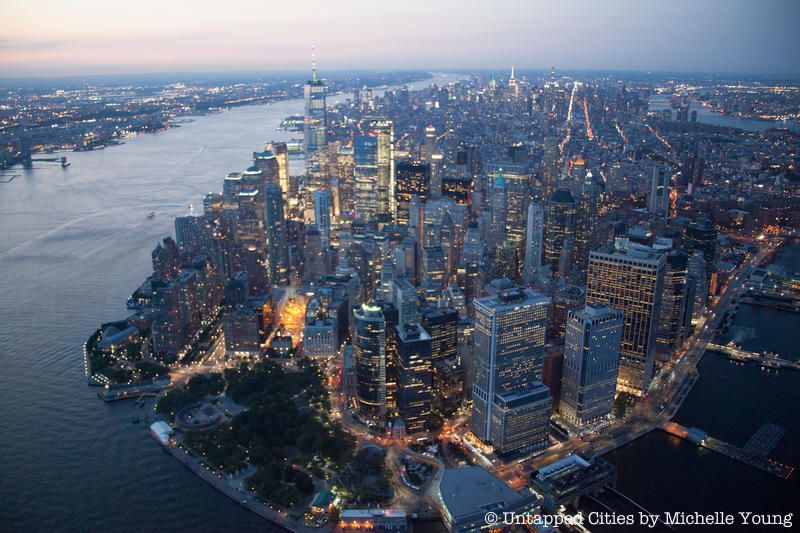
The popularization of “The Big Apple,” is credited to John J. Fitz Gerald, a 1920’s journalist and sports writer for the NY Morning Telegraph. For several years in the ’20s and ’30s, Fitz Gerald wrote a horse racing column for the Morning Telegraph entitled “Around the Big Apple.”
Fitz Gerald’s inspiration for the name, however, is the result of what’s most likely years of subconscious connections. References to horses eating apples appear in various cartoons and short stories dating back to as early as 1892. This history is then also combined with the pre-1920’s popular usage of phrases such as “Bet a Big Apple” and “Big Apples are top of the Barrel,” and NY Morning Telegraph’s use of “Big Time” — which was a popular reference for the most prestigious and highest achieving levels of entertainment during the early 1900’s.
The combination of all these influences is first revealed in Fitz Gerald’s 1924 column. Just below the column header, this short quote was published: “The Big Apple. The dream of every lad that ever threw a leg over thoroughbred and the goal of all horsemen. There’s only one Big Apple. That’s New York.” Read more here.

In 1907, businessman Harry N. Allen started the New York Taxicab Company, bringing the first gas-powered cabs to New York City. These 600 cabs, imported from France, were—surprise—red and green! A taxi historian, Graham Hodges, said owners of cab companies would paint their fleets a distinct signature color, resulting in cabs ranging from brown, white, red, and even checker ones. And some were yellow.
After a few years, two big cab companies decided that yellow was the way to go, with both ultimately contributing to the tradition of yellow cabs in New York City. These companies were the Yellow Cab Company, started by John Hertz in Chicago in 1910, and the Yellow Taxicab Company, which was incorporated in New York by Albert Rockwell in 1912.
Why did these guys want yellow? According to a popular account, Rockwell chose yellow to please his wife Nettie, who favored the color. However, according to Allan Fromberg, the Deputy Commissioner for Public Affairs at the NYC Taxi and Limousine Commission, it was Hertz who was the true driving force behind the influx of yellow cabs in New York City. As the founder of the Yellow Cab Company in Chicago in 1910 (later incorporated in 1915), Hertz read a University of Chicago study finding that yellow was the most prominent color seen from a distance. Understanding yellow would stand out the most to pedestrians seeking cabs in busy streets, he painted his cabs accordingly. Read more here.

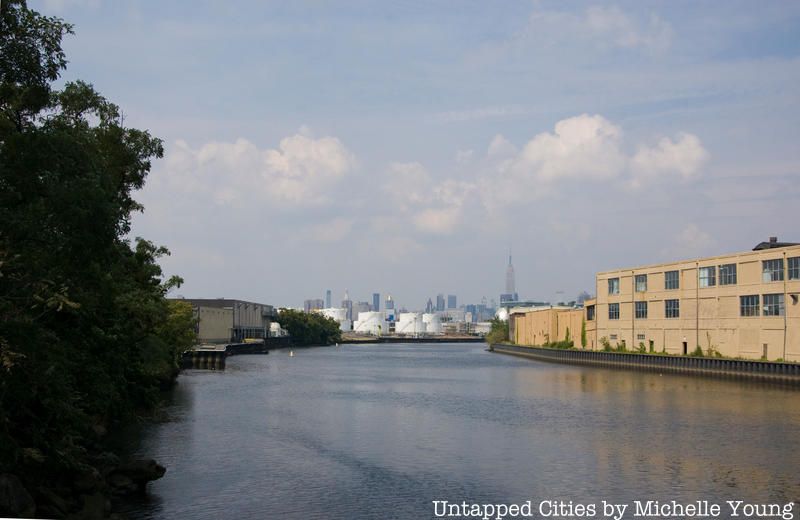
Disputes over the Brooklyn-Queens boundary have been raging since as early as 1661, more so reflecting the deeper conflicts between Bushwick‘s original Dutch settlers and Newtown’s English inhabitants. In 1768, a bill was passed for a commission to draw an official line between the two townships, and the next year, the borderline was measured from a huge rock called “Arbitration Rock” (remember, these were the days of natural boundaries). It wasn’t until 1880 that New York State sent surveyors to confirm the point on the rock it was measured from. Because Newtown was in Queens County and Bushwick was in Kings County, Arbitration Rock also became the boundary between these colonial counties in addition to the towns themselves.
Throughout the 1800s, Arbitration Rock was the formal marker for any property disputes between Brooklyn and Queens, with all property boundaries measured from the rock’s center. But things changed in 1898, when Newtown and Bushwick were folded into a consolidated City of New York. Arbitration Rock started losing its significance, so that by 1917, it was reduced to a decrepit, forgotten site.
Eight years later, the city redrew the Brooklyn-Queens border to alleviate disputes caused by the impeccable straightness of the former boundary, which was going right through people’s homes. In other words, someone could technically have a bathroom in Brooklyn, but a kitchen or living room in Queens.
In its 1931 Administrative Code, the City moved away from using natural markers as boundaries and instead precisely fixed a boundary to a grid plan using coordinates suggested by multiple federal agencies, rendering Arbitration Rock repetitive and unnecessary. However, even this didn’t solve the issue, as it ignored the constant, rapid development occurring in New York City, with the border running through buildings and monuments that no longer existed. In addition, the city experienced drastic demographic shifts post-World War II, and continues to evolve today. In the face of an ever-changing city, the boundary set by the 1931 code persists, resulting in continuing, tangible confusion between Brooklyn-Queens resident. Read more here.

Although New York is arguably home to the world’s best bagels, most food historians agree that bagels originally come from Poland. An old wives tale claims that the first bagel was made in honor of the 17th century King of Poland, John Sobeiski III, and his victory over the Ottomans in the 1683 Battle of Vienna.
According to the story, King Sobeiski was the first ruler who did not enforce the decree of 1496, which restricted the manufacturing of white bread and obwarzanek (bagellike rolls) to the Krakow bakers guild. This ultimately allowed for the Jewish production of bread products, leading up to the creation of the bagel. When Sobieski saved Austria from Turkish invaders, it is said that a baker crafted a roll in the shape of the king’s stirrup, calling it a beugel (Austrian for stirrup).
This tale, however, has been debunked by Maria Balinska, author of The Bagel: The Surprising History of a Modest Bread

. In a 2008 article by the New York Times, Balinska revealed that bagels are likely “cousin[s] to the pretzel” and may have existed even before the Jewish migration to Poland during the Middle Ages.
It is believed that bagels made their way to New York with the migration of Eastern European Jewish immigrants in the late 1800s. Their production began in small, privately owned bakeries, where they were hand rolled, boiled, and baked. As Jews assimilated and moved to different parts of the city, old world culinary staples and traditions were further shared. In the 1960s, bagel consumption in New York City skyrocketed following innovations in packaging and mass distribution channels. By the 1980s, the size of bagels nearly doubled and the New York Bagel, as we know it, was born. Read more here.
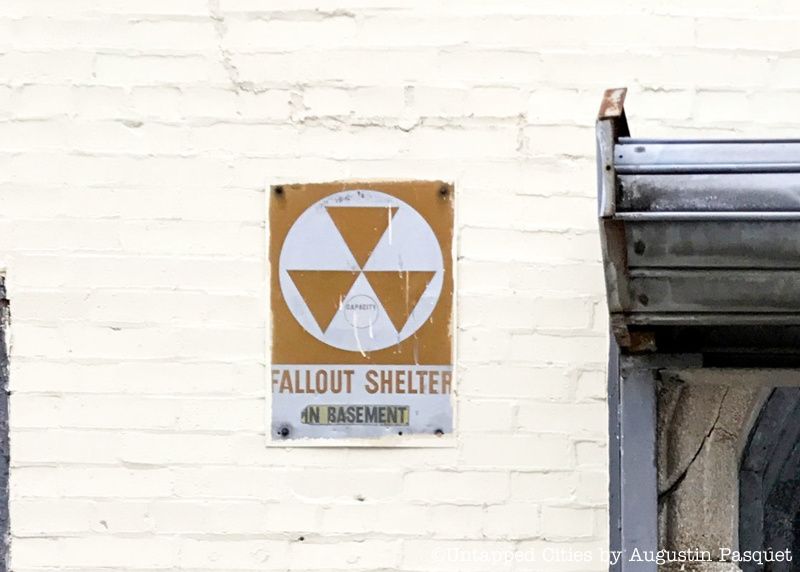
Although the Cold War is long over, you can still see remnants of it in New York City. If you’ve ever seen the faded yellow and black signs reading “FALLOUT SHELTER,” it means you’ve casually strolled by a building that was once used as a place for evacuation in the event of a nuclear explosion. While it’s hard to determine the precise number of former fallout shelters around the city, several are still marked by the weathered fallout shelter signs left over from the Cold War days, when we feared annihilation at any minute.
Under Governor Nelson D. Rockefeller, who reigned during a time when fear of nuclear destruction was at its peak, New York had tens of thousands of fall out shelters, or even more. Rockefeller created a mandatory state shelter program in 1960, but soon made it voluntary, with building owners opting into the program. According to Gothamist, Rockefeller was apparently so supportive of fallout shelters that he built them under his Executive Mansion in Albany and his homes in Maine, Westchester County, and Fifth Avenue.
In 1961, John F. Kennedy created a national fallout shelter system, and at the start of the Cuban Missile Crisis in 1962, shelters rapidly multiplied throughout New York City. This program entailed inspectors to survey buildings to determine if they could survive nuclear explosions. Identifying and certifying shelters was in the hands of local civil defense agents, and once buildings were certified, the government would hand out placards.
Unsurprisingly, most fallout shelters have been converted back to regular usage, and the fallout shelter system has since come to an end. The agency that sponsored the program was terminated in 1979. Read more here.
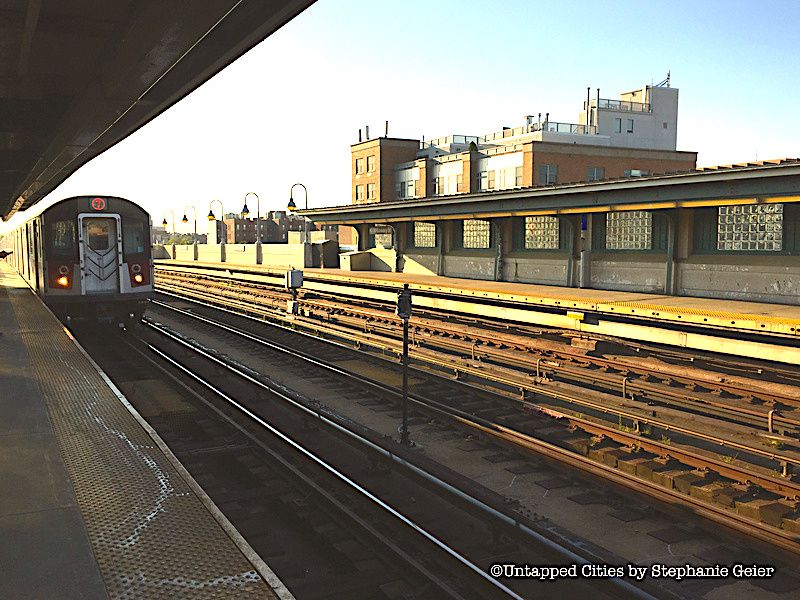
Did you know that numbered and lettered trains in New York City are different sizes? The reason has to do with the consolidation of the three railroad companies that once formed the MTA in the 1900s.
Originally, the MTA consisted of three railroad companies: the Interborough Rapid Transit Company (IRT), the Brooklyn-Manhattan Transit Corporation (BMT), and the city-owned Independent Rapid Transit Railroad (IND). However, they were all taken over and consolidated by the City in 1940—and their sizes haven’t changed.
In 1953, the state created the New York City Transit Authority, now the MTA New York City Transit, as a separate public organization to operate and manage all subway, bus, and trolleys owned by the city. Today, BMT and IND trains are longer and wider than those from the IRT lines. Accordingly, a BMT/IND train also can’t fit into a tunnel made for IRT trains. However, an IRT train is able to fit into a BMT/IND tunnel, although it is not safe due to its narrower size. Read more here.
Next, check out our Cities 101 column to learn more about how New York City operates.
Subscribe to our newsletter